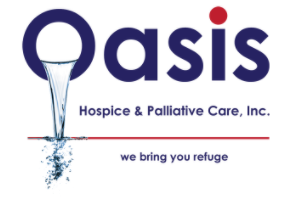Some people may die for weeks, while others may die in days or hours. Some of the changes listed below may occur as death approaches.
The level of activity drops dramatically
What are the signs of approaching death? The person may speak and move less, sleep for a greater portion of the day, and become resistant to any movement or activity. While gentle turning and repositioning can help with issues like muscle stiffness and pressure injury to the skin, the need for repositioning decreases as death approaches. Pre-medicating with appropriate pain management will help alleviate discomfort during repositioning if the dying person verbalizes discomfort during movement or if you observe signs of pain (such as grimacing) with movement/activity in nonverbal persons. Your healthcare provider can teach you how to do this safely by timing their turning and repositioning around their current pain management schedule or by prescribing additional pain medication to be taken as needed.
The fascination with the surroundings fades
The person may refuse to answer questions or show little interest in previously enjoyable activities or contact with family members, caregivers, or friends. This phenomenon has been labeled “detaching,” as the dying person gradually withdraws from life. As the dying person transitions, keeping the person’s environment as calm and peaceful as possible by dimming lights, softly playing the person’s favorite music, and some gentle touch and/or kind words can be soothing. Caregivers, family members, and healthcare providers should always act as if the dying person is aware of what is happening and can hear and understand voices. Hearing is one of the last senses to deteriorate before death. Oasis Hospice is one of the most famous medicare hospice.
The desire for food and drink has subsided
The person may have little or no appetite or thirst and may have swallowing difficulties, resulting in coughing and choking when attempting to consume medications, food, or fluids. People are normal and expected to be uninterested in food and fluids. Pushing food and fluids increases the risk of choking, pneumonia, and abdominal discomfort as the gastrointestinal system slows down with the rest of the body’s systems. Caregivers can provide comfort care by practicing good oral hygiene, using damp sponges to keep the mouth and lips moist, and applying lip balm to keep lips from chapping.
Changes in the bowel and bladder
Constipation may worsen, necessitating increased use of stool softeners or laxatives to maintain comfort. However, these medications should be stopped if the person has had little to no food or fluid intake for several days. It is also possible to lose bladder control and function. If incontinence causes skin breakdown, or if your healthcare provider suspects urine is being retained in the bladder for any reason, a foley catheter may be prescribed. When in place, a foley catheter is painless and will protect the surrounding skin, provide possible relief from abdominal pain/pressure caused by urinary retention, and reduce the burden of turning and repositioning during diaper or pad changes.
Body temperature can drop by one degree or more
The individual’s hand or skin may feel cold to the touch. Heating pads should not be used to warm hands or feet that are cold to the touch due to the high risk of skin burns on thin, fragile skin. A warm blanket may be enough to provide comfort. Some people may experience a mild fever, or their torso and face may feel warm to the touch and appear flushed. A lukewarm washcloth on the forehead may be soothing.
Blood pressure, heart rate, and respiration (breathing) rates decrease gradually.
Vital signs such as blood pressure and heart rate can fluctuate and become irregular near the end of life. This is not always indicative of a problem, but these changes should be reported to your hospice nurse or another healthcare provider. While these symptoms can occur at any stage of disease progression, they may become more severe in the final days or hours before death. Increased pain as a result of disease progression, worsening of chronic conditions such as arthritis or stiff/inflamed joints, or increased pressure wounds to the skin.
While some people can express their pain verbally, pain or distress may be evident in nonverbal people through signs such as moaning/groaning, stiffening of the body, grimacing, clenching of fists or teeth, yelling, calling out, agitation, restlessness, or other manifestations of discomfort. To provide rapid symptom relief, hospice and palliative care providers can prescribe medications in liquid form that are absorbed sublingually (under the tongue or inside the cheek and absorbed through the mouth).
Knees, feet, and hands’ skin may turn purplish, pale, grey, blotchy, or mottled
These changes usually indicate that death will occur within a few days to a few hours. Pressure wounds can be chronic and appear at any stage of terminal illness, especially if the person becomes very debilitated and is bedbound for an extended period or if they experience significant weight loss or muscle wasting as a result of advanced disease progression; however, open wounds that appear very quickly can also appear at the end of life. The skin is an organ, and like other organs, it begins to fail near the end of life. Instead of attempting to heal these wounds with aggressive (and potentially painful) invasive intervention or treatment, the goal of care for these wounds is to use pain medication to keep the person comfortable, attempt to prevent the wounds from worsening, and keep them clean and free of infection. Your hospice or healthcare provider will advise you on how to care for wounds and other skin changes. Periods of rapid breathing and no breathing, coughing or noisy breathing, or increasingly shallow respirations, especially in the final hours or days of life
Turning, repositioning, or elevating the head/shoulders can sometimes relieve noisy breathing, especially if secretions are retained in the mouth due to the patient’s inability to swallow near death. Caregivers are frequently distressed by this breathing, but it does not indicate pain or suffering. A vaporizer can sometimes help with breathing. Your hospice or healthcare provider may recommend medications to help manage excessive secretions.
Other Breathing Changes
The breathing of a dying person will change from a normal rate and rhythm to a new pattern, with several rapid breaths followed by a period of no breathing (apnea). These apneas will eventually progress from a few seconds to longer periods where no breath is taken. This breathing pattern is known as Cheyne-Stokes breathing, named after the person who first described it, and it usually indicates that death is imminent (minutes to hours).
Agitation and periods of agitation
While this is common and often without a clear cause, it can be upsetting for caregivers to witness. Medications may be beneficial in the treatment of terminal agitation or terminal restlessness.
The consciousness fades
People frequently lapse into an unconscious or coma-like state before death and become completely unresponsive. This is a deep state of unconsciousness in which a person cannot be aroused, cannot open their eyes, and cannot communicate or respond to touch. Even if they cannot respond, people in a coma may hear what is said. It should be assumed that even if a person cannot speak, they can still feel pain or distress, even if they cannot express those feelings verbally.
Sensory shifts
It is not uncommon for dying people to experience sensory changes that result in illusions, hallucinations, or delusions:
Illusions – They may misinterpret a sound or become perplexed by an object in the room. They may hear the wind but believe someone is crying, or they may see the lamp in the corner and believe it is a person. Hallucinations are when you hear voices you can’t hear, see things you can’t see, or feel things you can’t touch or feel. Depending on the content, these hallucinations may be frightening or comforting to the dying person.
Delusions of persecution and delusions of grandeur – They may misinterpret reality and believe others are attempting to hurt or harm them. They may believe they are capable of accomplishing things that are not.
They may report being aware of their impending death and expressing that they will soon be able to see their God, another religious figure, or loved friends and relatives who have died before them. It is common for dying people to discuss preparing for a trip, traveling, or travel-related activities such as boarding a plane or packing a bag. Many dying people find this awareness comforting, especially the prospect of reunion.
These sensory changes can fluctuate throughout the day and are often more noticeable at night. Medications are available to help alleviate symptoms that appear to be causing distress. Your hospice provider will determine whether medication is required to treat these complicated symptoms. You can contact Oasis Hospice 24/7. You can also read understanding the stages of death? For more information, call us at 708-564-4838.

